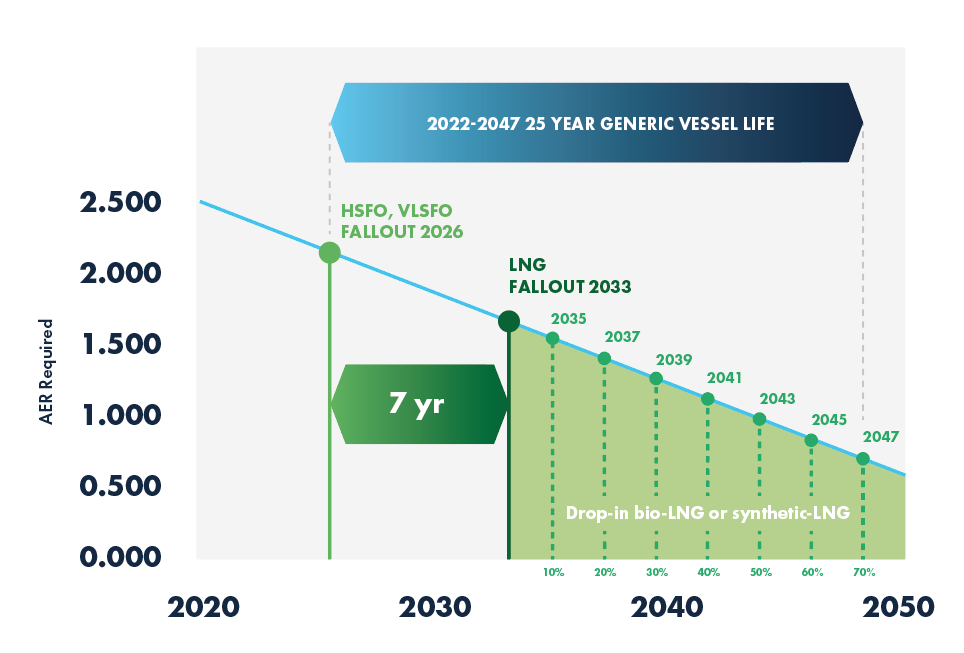United Kingdom – New research by SEA-LNG, the alliance to accelerate LNG as a marine fuel, has estimated that with every 10% of bio-LNG dropped in and blended with LNG as a marine fuel, a vessel will obtain two additional years of compliance with the Annual Efficiency Ratio (AER) curve used to obtain preferred funding under the Poseidon Principles.
The analysis compares LNG plus bio-LNG from a zero-carbon, renewable source to traditional vessel fuels such as HFO, VLSFO and MGO. Bio-LNG is entirely compliant with current LNG infrastructure and technology and increasingly accepted as a renewable fuel that can be ‘dropped in’ and mixed with LNG. It is also one of the most feasible paths for decarbonization currently open to owners.

Greenhouse gas savings
LNG fuel delivers greenhouse gas (GHG) savings of up to 21 percent Well-to-Wake and up to 28 percent Tank-to-Wake. This means that LNG vessels are doing well in line with the financing criteria of Poseidon Principles, which were introduced by financial institutions to enhance strategic decision-making and to shape a better future for the maritime industry and society.
The Poseidon Principles assess success against these goals by using an AER score. This follows an ever-tightening decarbonization pathway index up to 2050, requiring a vessel to boost its gross carbon emissions intensity. This measure is meant to align and promote the targets of the IMO to minimize gross annual GHG emissions by at least 50% by 2050.
Circular economy promotion
Bio-LNG has unique benefits when it is derived from domestic and industrial waste. The method will absorb methane that would otherwise be sold into the atmosphere, resulting in a fuel that is not just zero GHG emissions but has a capacity for negative emissions. By helping with the reprocessing of waste products, bio-LNG will promote the circular economy and help minimize yet another global concern: waste management. The future GHG mitigation benefits from the capture and reuse of waste sources in the global economy are important and need to be included in any serious consideration of alternative fuels.





